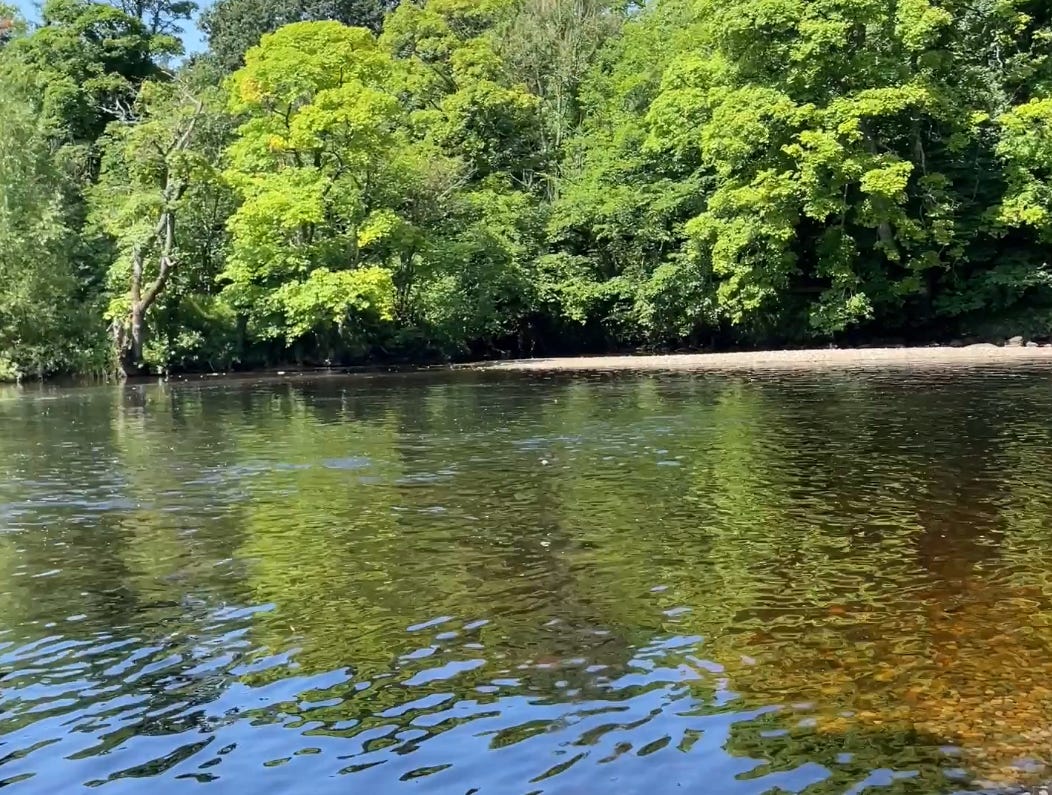High levels of E.coli and 30 chemical pollutants found at River Wharfe
New study reveals just how polluted the designated bathing site is
Major nationwide bathing water monitoring of the River Wharfe in Ilkley has found pollution with high levels of E.coli and 30 chemical pollutants at the Designated Bathing Site.
This was one of the major findings of the largest inland bathing water quality study ever conducted in the UK, which citizen scientists from 23 communities, including the Ilkley Clean River Group, contributed to.
The study revealed that the River Wharfe at Ilkley had among the highest levels of E.coli and organic chemicals, with metformin (a drug used to treat type 2 diabetes), caffeine and nicotine being present at the highest concentrations of the chemicals tested.
The groundbreaking national study saw citizen scientists in Ilkley collect daily water samples from Cromwheel (the testing point for bathing) for one week in the summer.
Bathing waters are traditionally monitored by the Environment Agency in England for up to 20 weeks during the bathing season, focusing primarily on two harmful bacteria, E. coli and intestinal enterococci.
However, this national citizen science-led study revealed high levels of organic substances, which included a cocktail of pharmaceuticals, PFAS, pesticides, vet medicines, caffeine and nicotine.
The intensive monitoring at our most loved waterways highlighted the need to expand the Environment Agency monitoring regime to include a broader range of contaminants that may pose risks to human health.
“The testing here in Ilkley has once again shown the presence of exceptionally high concentrations of E.coli but also found the presence of a large number of chemical contaminants,” said Di Lury from the Ilkley Clean River Group.
“While the cocktail of chemicals discovered are at levels which are unlikely to pose an immediate risk to human health there is a very real risk of further development of antibiotic resistance which is known to be one of the biggest threats for our future.
“The chemicals found here can build up in the environment and enter the food chain, causing untold damage to our ecosystems. There is also very little research into the potentially harmful effects on aquatic organisms and several of the chemicals found at Ilkley are known to be very toxic to aquatic organisms and build up in them.”
Karen Shackleton, founder of the Ilkley Clean River Group, added that it was “outrageous” that it has fallen on concerned citizens to pour thousands of hours of their time to expose “the sewage scandal” and the resulting harmful impact that bacteria and chemicals that have entered into our water systems has on our aquatic ecosystems”.
“It highlights the utter failure of the regulators to protect our waterways and shows self-regulation by the water companies is not working,” she concluded.
The study was a collaboration with Surfers Against Sewage, Watershed Investigations and the University of York. The authors are seeking to raise awareness about the quality of inland bathing waters and demand radical reform of current legislation to account for emerging pollutants that pose new threats to public health.
The findings of the study are set to inform future water quality policies and shape the direction of environmental regulations in the UK, with a government consultation on Bathing Water Regulation reform in England and Wales welcoming responses up until Monday 23 December.
"The saturation of our waterways with sewage pollution is well known, but these findings demonstrate there's a lot more than human waste lurking beneath the surface,” said Giles Bristow, chief executive of Surfers Against Sewage.
“With regulators and the government turning a blind eye, citizen scientists, like those in the Ilkley Clean River Group have acted to lift the lid on the toxic chemical cocktail that's leeching into our rivers, lakes and seas.”



